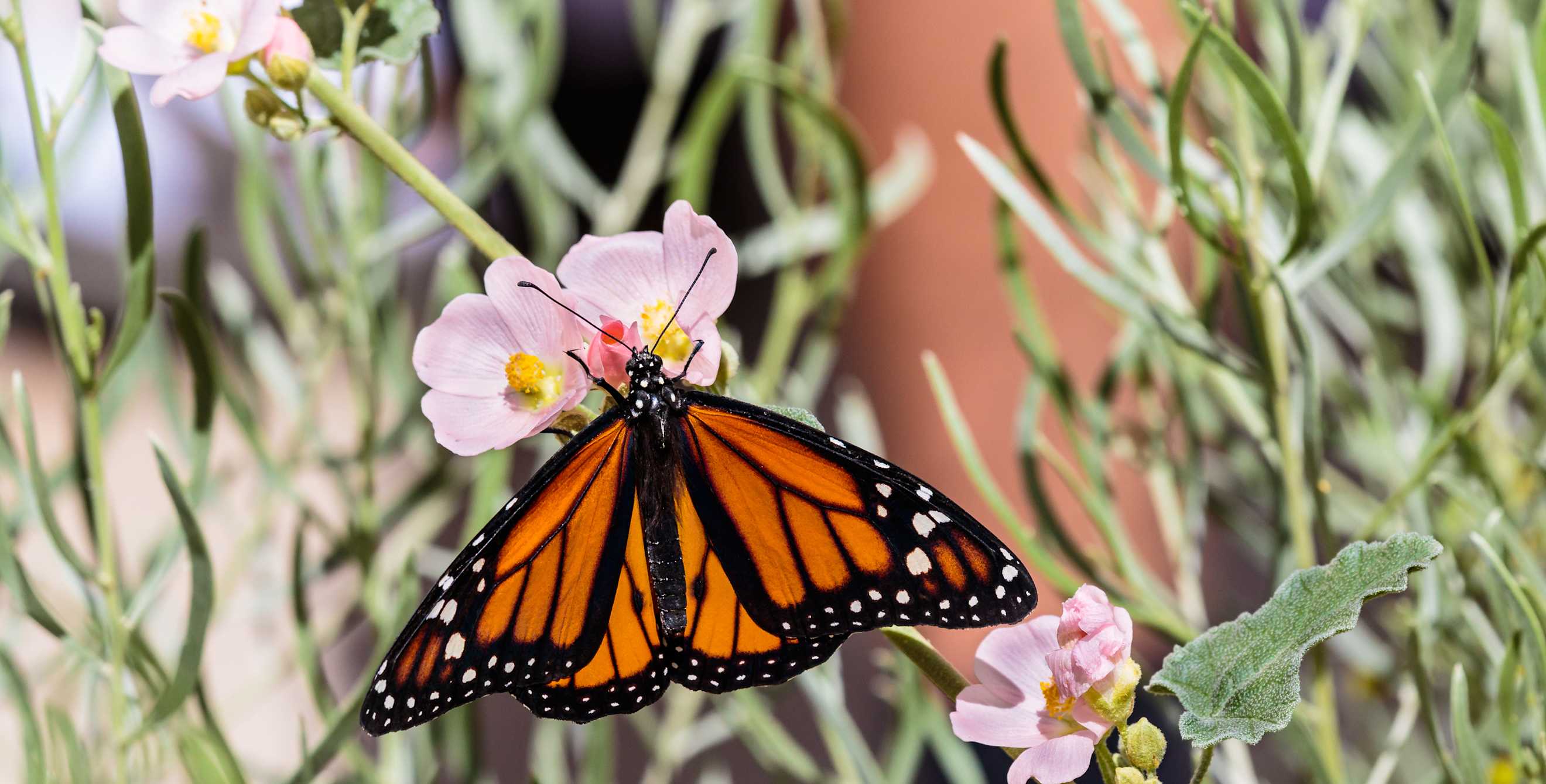
How to Help Save the Western Monarch Butterfly
Implement these strategies in your yard and community to help the butterflies bounce back.

Since the 1980s, scientists have tracked a more than 95 percent decline of Western monarch butterflies, arguably the most recognizable of its kind with symmetrical black and orange wings. The Xerces Society for Invertebrate Conservation in 2020 cataloged fewer than 2,000 butterflies during its annual volunteer-powered Thanksgiving Count. But during the most recent event at the end of 2021, something phenomenal happened: Volunteers stationed at overwintering sites stretching from Mendocino to San Diego counted nearly 250,000 Western monarchs, a hopeful increase but one that still doesn’t compare to the millions counted in the 1980s or remove them from the endangered species list.
“It inspired cautious optimism among scientists because last year things looked really grim,” says Isis Howard, Xerces Society’s endangered species conservation biologist. “I think a lot of us were really worried that we might not see any this year.”
While Western and Eastern monarchs are the same species, they’re separate populations that migrate to different areas. Eastern monarchs make their way to Mexico at the end of the year, whereas Western monarchs overwinter along the West coast.
So far, scientists have a few hypotheses about the Western monarch’s uptick—temperature, rainfall, food availability, etcetera—but it’s going to take a few years for them to collect enough evidence to prove one. Regardless, scientists see this year as an opportunity to double down on conservation efforts to save the monarchs from the brink of extinction.
Here are four ways that you can help support the longevity of the symbolic and ecologically significant Western monarch butterfly.

Monarch caterpillars feed exclusively on native milkweed species.
Build a butterfly habitat.
Once Western monarch butterflies finish overwintering along the coastline by February and March, they’ll disperse to all states west of the Rocky Mountains in search of homes to eat and breed. That can include your backyard, patio, or balcony if you make it a welcoming habitat for pollinators.
“A lot of the things you can do to protect pollinators will also protect the monarch butterfly and vice versa,” Howard says.
Monarchs feed on the nectar of flowering plants, but they only lay their eggs on particular species of milkweed, such as Asclepias californica and Asclepias vestita. Because milkweed is poisonous to most vertebrates, it provides the monarch with safety and protection, according to the U.S. Forest Service.
To attract monarchs and other pollinators, create a biodiverse garden and landscape by planting milkweed and flowers that are native to your region. Certain varieties of milkweed prefer being planted in a raised garden bed, while others thrive in portable containers.
Reduce or eliminate reliance on pesticides.
Pesticides, including herbicides and fungicides, are one of the greatest threats to Western monarchs along with climate change and habitat loss, Howard says.
In addition to reducing or eliminating pesticides in your own garden, she suggests supporting farms that use fewer and less harmful pesticides (look for items that are Bee Better Certified) and advocating against spraying at local parks or schools within your community.
Additionally, Howard recommends asking nurseries if they use pesticides on pollinator-friendly plants. “For one, it’s good for you to be aware so you can make an informed decision on whether you want to plant that or not,” she says. “But two, I think it really signifies to nurseries that people care and they’re looking out for this.”